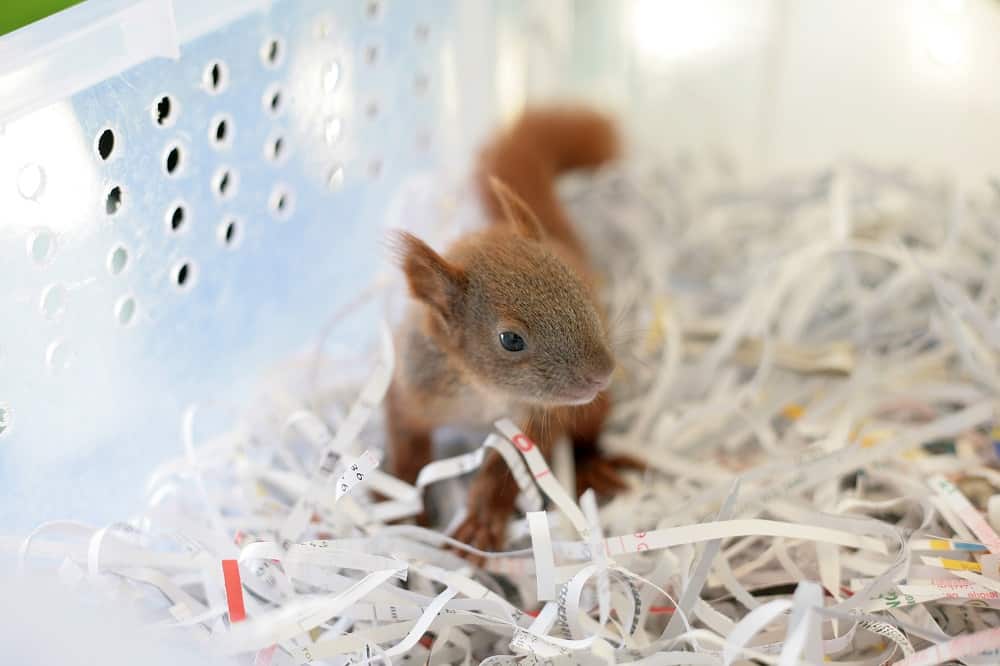Pest control is a necessary form of mitigation that can help protect people, their pets, and their homes. Pests can come in all forms, and several of them are capable of carrying diseases and hurting people and pets. While there are effective forms of lethal pest control, there are different situations where people would prefer humane pest control options; Either for personal ideologies (veganism for example) or practical reasons.
Fortunately, there are humane pest control options for those who do not wish harm against pests. A common way to control pests is through the use of repellents – substances that can actively deter target pests. There are several types of plant-based substances such as capsaicin and essential oils. However, other repellents include urine from predators and ultrasonic devices. Pests can also be removed from the premises by a professional and be relocated somewhere else. Lastly, physical barriers can be a straightforward approach in preventing pests from entering the property.
Table of Contents
The Need for Humane Methods
There are several reasons why pests need to be controlled as quickly as possible. Aside from possibly damaging personal property; Certain pests act as vectors for certain diseases. Thus, it is in the best interest of homeowners to make sure their homes are pest-free.
There are numerous ways to deal with pests. However, many of the options available in the market cannot be considered humane.
A common type of pest control is the use of poisons. Different poisons are used such as acute toxins (e.g., cyanide, phosphorus, rotenone, etc.), anticoagulants (e.g., brodifacoum, flocoumafen, diphacinone, etc.), and fumigants (e.g., aluminum and magnesium phosphide, chloropicrin, methyl bromide, carbon dioxide, etc.).
However, these poisons cannot be considered humane due to the excruciating experience they inflict on the target pests. Many types of poison are slow-acting to ensure that the pests are able to consume large amounts of these poisons, thus prolonging their suffering.
Mechanical or spring-loaded traps are also commonly used against vertebrate pests such as rodents, squirrels, and raccoons. Although many of these products promise a quick death, there are instances where the trapped pests are able to survive the mechanism and simply die due to blood loss or starvation. This is also the case for many glue traps where the target pests simply die from starvation or thirst as they are restrained due to the glue.
While pests have to be removed from an area to maintain public health and protect property, there is no need to deal with the pests unethically. The use of humane methods is also considered to be a safer pest control approach for non-target organisms. This is especially important for households with pets or small children. Since many pest control methods are designed to be attractive or palatable, there are many cases where these control methods inadvertently harm pets or children instead.
Humane Pest Control Methods
The Use of Repellents

Repellents are substances that can cause certain adverse behavioral responses to target organisms, typically the pests in question. Repellents are also particularly humane because they only serve to repel and deter pests, not harm them. There are different types of repellents, many of which are effective against mammalian pests such as rodents, squirrels, and raccoons.
The most common types of natural repellents are plant-based substances. These are substances that plants produce that is also suggested to play a role in their defense against grazing as well.
To illustrate, X-Pest notes that garlic, capsaicin, and ammonia are effective at getting rid of voles. Capsaicin is one of the most common, plant-based substances for repelling pests – the active component that makes chilies and hot peppers spicy.
Belonging to plants under the genus Capsicum, capsaicin produces a burning sensation in mammals. The distinction in the effect of capsaicin is why it is commonly used as a way to protect bird seeds in birdfeeders from squirrels (1). While the capsaicin in the bird seeds can irritate and deter squirrels, birds are not affected by its presence.
Capsaicin is a common active ingredient used in natural repellents against rodent infestation. Rodents such as rats, mice, and voles can destroy private property and carry a number of diseases. It is important that residential homes are free from these pests from a public health perspective. Fortunately, numerous studies have found capsaicin to work effectively against these animals. Due to the pungency of capsaicin, aversive behavior has been detected from rodent test subjects (2).
Other natural substances known to have repellent properties include black pepper oil, bergamot oil, buchu oil, fennel oil, grass-tree oil, neem oil, white pepper, garlic, cloves, camphor white oil, eucalyptus oil, and so on (3). All these ingredients can be made into a liquid solution that can be sprayed in areas to prevent entry to rodent pests. Many also suggest using the liquid solution to saturate cotton balls that can be placed in common entry points.
Aside from plant-based substances, urine obtained from common predators has also been found to be highly effective against rodents. Numerous studies have found that urine from predators such as wolves, domestic cats, and wildcats has been found to evoke fear-associated behaviors in rodents such as freezing and aversion (4, 5).
Another common type of repellent used in pest control is electronic ultrasonic devices. These are devices that claim to use a wide acoustic range that specifically targets certain pests, causing irritation without affecting non-target organisms such as humans. These ultrasonic devices typically employ sounds above 18,000 Hz and are targeted towards mammalian and insect pests (e.g., spiders, scorpions, cockroaches, etc.).
However, it should be noted that a significant number of these devices have been tested in scientific studies without success (6). While there are some devices that have been found to work, the technology is still yet being developed.
Professional Removal

One common method for pest control that does not hurt the animals is through professional removal. Professional removal, or wildlife removal, is when the pests (typically mammalian pests such as raccoons, skunks, possums, etc.) are captured and safely relocated by wildlife professionals.
However, it is important to make sure that the animal caught is not a mother. Mothers can often be found exploring and scavenging for food as a way to bring food back home to their offspring. If a mother is relocated without the offspring, the offspring will probably perish.
Professional removal is also suggested to be a humane pest control method for bee nest removal. Although bees significantly contribute to the environment, many people are not keen on bees forming nests in their private property. Aggressive or agitated bees can be inclined to sting humans or pets, possibly causing an anaphylactic reaction to those who are allergic. Thus, for safety reasons, bee nests near residential homes should be addressed.
Physical Barriers
Adding physical barriers that hinder movement or entry can also be a humane pest control method. The physical barriers are specifically catered towards a group of target organisms. It is a straightforward method that either blocks entry or causes aversion in one way or another.
For example, fencing can be an effective way to prevent wild rabbits from entering the backyard garden. While the whole garden can be rabbit fenced, a cost-effective method would be to simply rabbit fence the garden bed that attracts these animals in the first place.
Another form of physical barrier that can be employed is using fishing wire against birds. Installing fishing wires in a crisscross pattern across a certain area can deter birds from moving about in the area as the translucent fishing wire can impede flight. This is an excellent method as the fishing wire control does not affect the aesthetics of the area while functionally deterring birds from the area.
To prevent rodents from entering the household, a great way to make sure all potential entry points are sealed up. The CDC (Centers for Disease Control and Prevention) recommends identifying potential entry points around kitchen cabinets, doors, fireplaces, pipes, vents, and so on (7). Mice and rats can squeeze through holes which is why the holes have to be sealed correctly. Larger holes might require metal sheeting, cement, or hardware cloth. However, smaller holes can be filled with steel wool and caulk.
References
1. https://digitalcommons.unl.edu/
2. http://www.connectjournals.com/
4. https://www.sciencemag.org/



